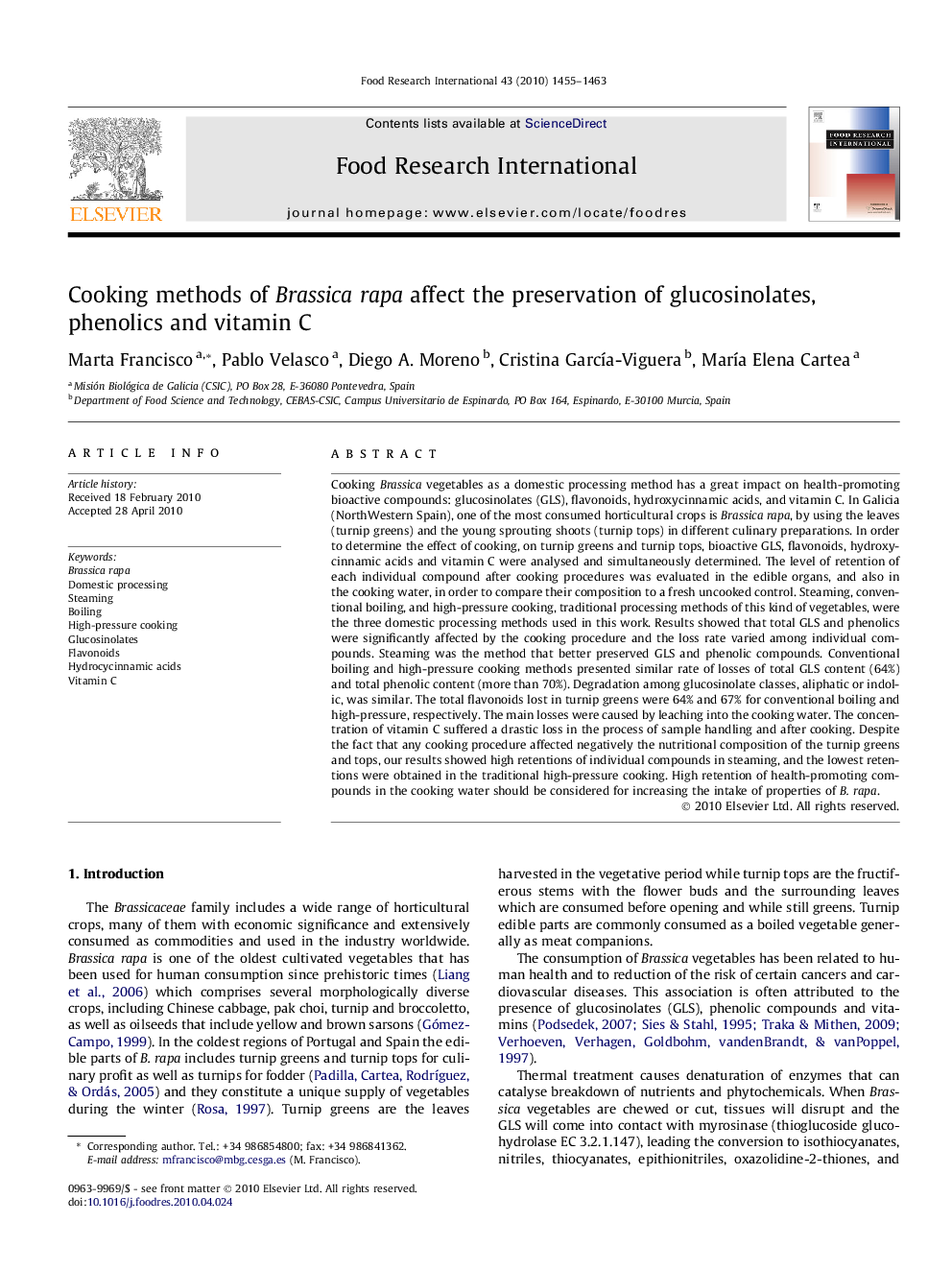| کد مقاله | کد نشریه | سال انتشار | مقاله انگلیسی | نسخه تمام متن |
|---|---|---|---|---|
| 4562618 | 1330722 | 2010 | 9 صفحه PDF | دانلود رایگان |

Cooking Brassica vegetables as a domestic processing method has a great impact on health-promoting bioactive compounds: glucosinolates (GLS), flavonoids, hydroxycinnamic acids, and vitamin C. In Galicia (NorthWestern Spain), one of the most consumed horticultural crops is Brassica rapa, by using the leaves (turnip greens) and the young sprouting shoots (turnip tops) in different culinary preparations. In order to determine the effect of cooking, on turnip greens and turnip tops, bioactive GLS, flavonoids, hydroxycinnamic acids and vitamin C were analysed and simultaneously determined. The level of retention of each individual compound after cooking procedures was evaluated in the edible organs, and also in the cooking water, in order to compare their composition to a fresh uncooked control. Steaming, conventional boiling, and high-pressure cooking, traditional processing methods of this kind of vegetables, were the three domestic processing methods used in this work. Results showed that total GLS and phenolics were significantly affected by the cooking procedure and the loss rate varied among individual compounds. Steaming was the method that better preserved GLS and phenolic compounds. Conventional boiling and high-pressure cooking methods presented similar rate of losses of total GLS content (64%) and total phenolic content (more than 70%). Degradation among glucosinolate classes, aliphatic or indolic, was similar. The total flavonoids lost in turnip greens were 64% and 67% for conventional boiling and high-pressure, respectively. The main losses were caused by leaching into the cooking water. The concentration of vitamin C suffered a drastic loss in the process of sample handling and after cooking. Despite the fact that any cooking procedure affected negatively the nutritional composition of the turnip greens and tops, our results showed high retentions of individual compounds in steaming, and the lowest retentions were obtained in the traditional high-pressure cooking. High retention of health-promoting compounds in the cooking water should be considered for increasing the intake of properties of B. rapa.
Journal: Food Research International - Volume 43, Issue 5, June 2010, Pages 1455–1463